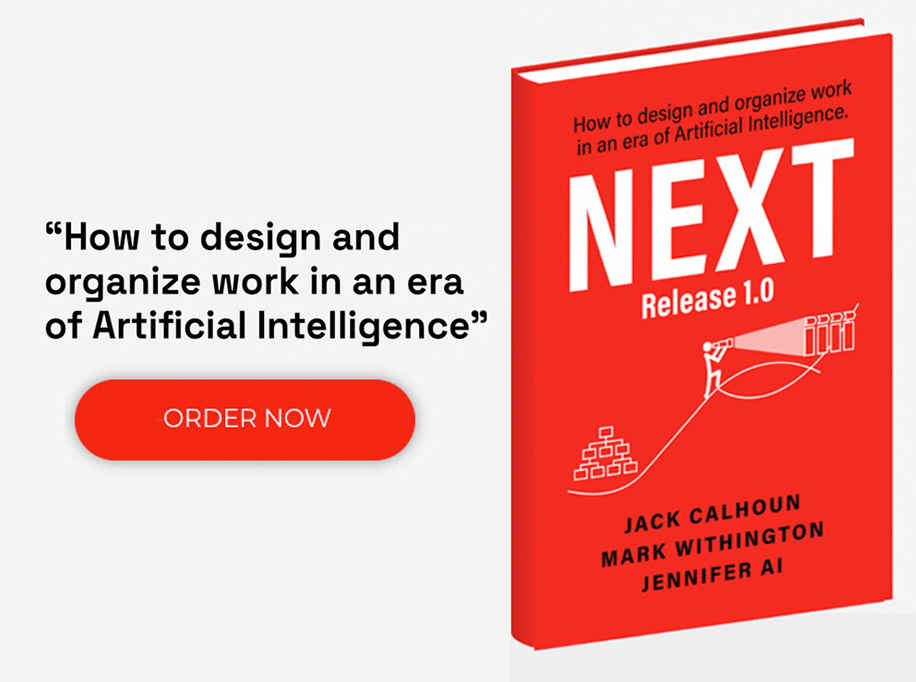To successfully transform your organization digitally, you must have a clear understanding of both strategy execution and strategy implementation. Often organizations will confuse Strategy Execution – the act of identifying and designing its strategy and the portfolio of projects necessary to realize that strategy – with Strategy Implementation – the act of actually spinning up and running the projects identified within that portfolio. A clearly mapped-out strategy and effective implementation will lead to digital transformation success. In this article, we’ll discuss strategy execution and implementation and the key differences between them.
What is Strategy Execution?
Strategy execution is the process organizations use to identify their strategic objectives and create the portfolio of projects they’ll use to implement those objectives. Organizations rarely realize, though, that the strategic portfolio identified within Strategy Execution should address two separate agendas:
- Run and Improve – These projects typically use the concepts of automation to improve the efficiency and effectiveness of existing organizational processes.
- Transform – These projects are explicitly defined to change the organization’s business model, typically creating new capabilities that use emerging technologies or processes.
Unfortunately, the Transformation Agenda is often viewed as a once-every-so-often necessity (e.g., with names like “The five-year strategy” or “Long-range strategy”), opting instead to focus solely on the Run and Improve (e.g., automation) Agenda during the annual budgeting cycle. This default approach is short-sighted, squarely positioning an organization in the crosshairs to be “Amazoned.”
Additionally, the [current] budgeting process promotes functional optimization (e.g., following the artificial siloes created by the Org-chart) rather than holistic end-to-end customer views resulting in a fragmented Customer Experience (CX) with clumsy handoffs between departments.
To avoid this, organizations need to use a more deliberate Strategy Execution process, and a more up-to-date management tool (beyond the Org-chart) called the Enterprise Operating Model. An Operating Model is an abstract and visual representation of the capabilities (People, Processes, and Technology) that deliver the organization’s value proposition. Operating Models extend Michael Porter’s Value Chain concept to include Capability Families and the associated capabilities within that family that add value (see community savings bank example below).
Using the Enterprise Operating Model as the canvas on which the Strategy Execution is drawn allows leaders to easily identify missing or deficient capabilities to be included in the Transformation Agenda, rebalancing the two portfolios (run and improve, transformation) to ensure the organization is planning for the future as well as the present.
Accelare’s Strategy to Execution (S2E) approach follows a three-phase methodology:
- Clarify Strategy & Enterprise Operating Model Design
- Purpose-Driven Customer Experience Design
- Planning and Platform-based Design Engineering
This ensures Strategy Execution includes both Run and Improve AND Transformation projects from a true customer-centric perspective.
What is Strategy Implementation?
Strategy implementation is spinning up and running the projects identified within the portfolios in the strategy execution phase. If strategy execution is the battle plan, then the implementation is fighting the battle. Or, to put it more simply, implementation is the action that results from your strategy. One of the biggest and most important challenges when implementing the strategy is assembling the logical order in which the projects that make up the strategy will be completed. To do so, we recommend the following six steps.
- Summarize each Project onto a Page (PoP) within the two portfolios (run and improve and transform)
- Stack → Sequence → Slot: Create an ordered list of the Pops stack ranked first by priority and then by dependency on other PoPs.
- Apply the Real Options filter. Once projects are framed in terms of the options they create, they can be viewed in terms of rough value to cost and volatility (e.g., technology and marketplace stability, etc.). Ask the following questions and adjust slotting accordingly.
- Growth Option Filter: Does it impact retention/new revenue opportunities?
- Timing options Filter: Are there predictable losses associated with deferring investments?
- Staging Option Filter: Is there value in breaking up the project?
- Flexibility Option: Is there value is not being locked into a solution?
- Exit Option Filter: What is the value to exiting at a particular point downstream?
- Assess value and volatility. By thinking about projects in terms of value to cost and volatility, management can quickly identify which projects are needed when along with key risk factors. The Real Options Grid shows value (benefits gained) juxtaposed with volatility (uncertainty in markets, technology). High value with low risk is an invest-now decision. High value with lots of volatility suggests you should delay decisions until better information is available about competitors, technology, etc. Review projects for value and volatility and adjust timing.
The ‘Real Options’ Grid
- Assess precious resources. When a few people are needed on multiple projects:
- Can one become a coach?
- Can you re-sequence the projects to leverage special knowledge?
- Can outside resources be leveraged?
- Can you triage projects so high pay-off projects use the key people?
- Assess the estimated budget, and triage projects so that high pay-off or critical path projects are funded. Re-slot appropriately.
Implementation in Strategy: Key Differences
When it comes to implementation vs execution in strategy, there are two key differences.
- Despite execution and implementation being action words, in the context of strategy execution, execution refers to creating a thorough strategy, whereas strategy implementation is when the strategy is put into action. So, strategy implementation is the next step after strategy execution.
- Communication will differ between these two stages. While it is essential for both, during strategy execution, the communication will be more focused on delivering the strategy to the organization, with some room for feedback. During the implementation phase, there will be more back and forth feedback as employees run into challenges or innovative opportunities.
Accelare Strategy Execution Services
Accelerate your digital transformation with our team of strategy execution experts. We have years of experience assisting companies in fine-tuning their strategy execution and strategy implementation phases as they move into more modern and competitive operating models. Reach out to us today to get started.
If you would like to assess your organization’s strategy to execution process, please take our four-minute Strategy to Execution (S2E) Assessment. Upon submission, you’ll receive your organization’s S2E assessment report containing:
1. An In-Depth Overview of Accelare’s Four S2E Domains
2. Your Organizational S2E Readiness Assessment
3. Domain-Specific Opportunities Based on Your Responses
4. Your S2E Maturity Level Defined
5. Next Steps!
Ready to Lead in the Augmented Age?
Discover how to redesign your organization for an AI-driven future. NEXT is more than a book—it’s your roadmap to thriving in a world where humans and machines collaborate to create unprecedented value.
Order your copy today and start building what’s next.











